Holy Smokes! Why Chefs Are Burning Food on Purpose
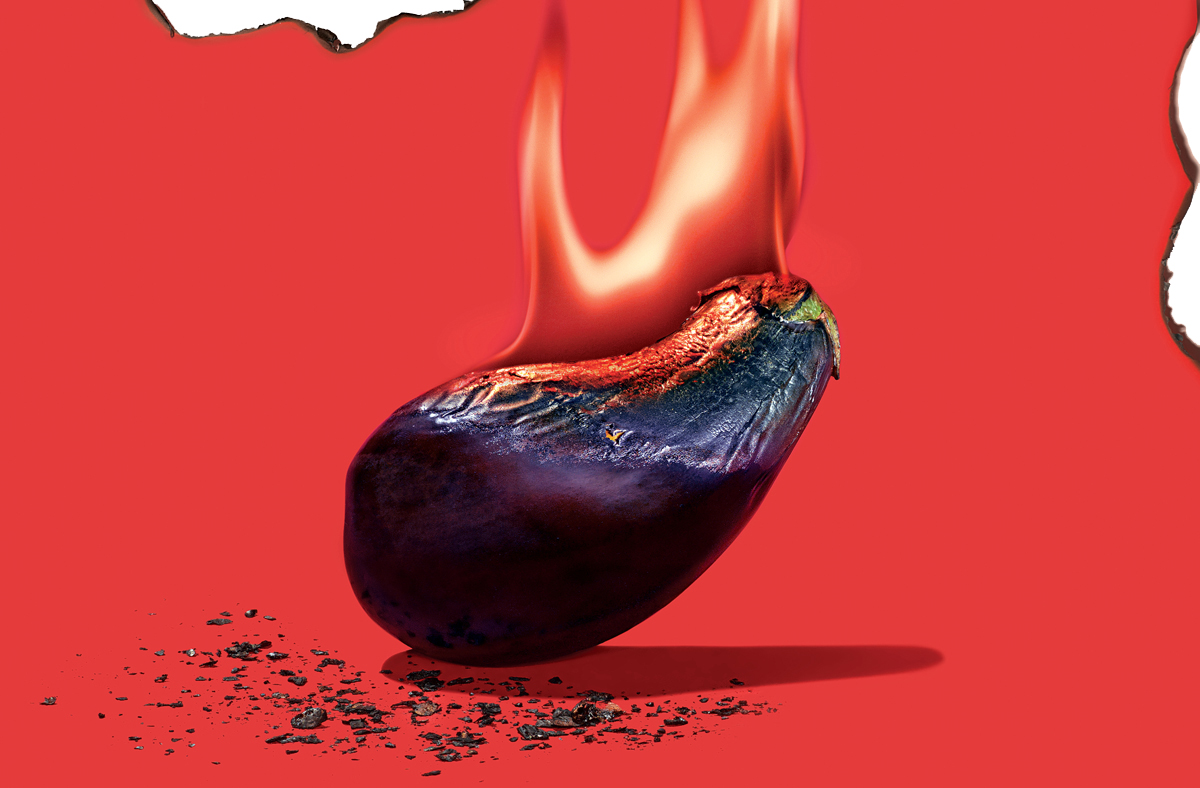
Photograph by Zachary Zavislak. Styling by Molly Shuster/Team.
Burning ’Round the House: One easy way to incorporate the art of the char into your home routine is with a simple burnt-eggplant purée. Here’s how Bondir’s Jason Bond does it: “Place the eggplant on a cast-iron griddle and char it on all sides until literally crispy and burnt on the exterior. Transfer the scraped insides and the crisp, burnt skin into a food processor and purée until smooth. Add a little olive oil and lemon, and you’ve got a glossy, jet-black, delicious purée.”
While barbecue masters have long embraced the char, not-burning-things is right up there with knife safety as a core tenet of culinary school. Lately, however, there’s been a marked spike in chefs’ incinerating food on purpose—adding smoky, complex, assertively bitter notes to dishes not traditionally reliant on the kiss of the flame. Grills, griddles, and open burners are the typical tools for achieving a state of “extra well done.” The alternative: using char as an ingredient in and of itself. At L’Espalier, the kitchen team burns carrots, beets, onions, and greens to a carbon-laden crisp, using the resulting “vegetable ash” to add flavor and dramatic color to aiolis, oils, and terrines. “It’s definitely a good way to get that burnt flavor across—[normally] you can’t do that unless you have a nice big wood stove, or cook outside,” says chef de cuisine Matt Delisle. Ahead, other ways this incendiary ethos is sparking culinary creativity citywide.
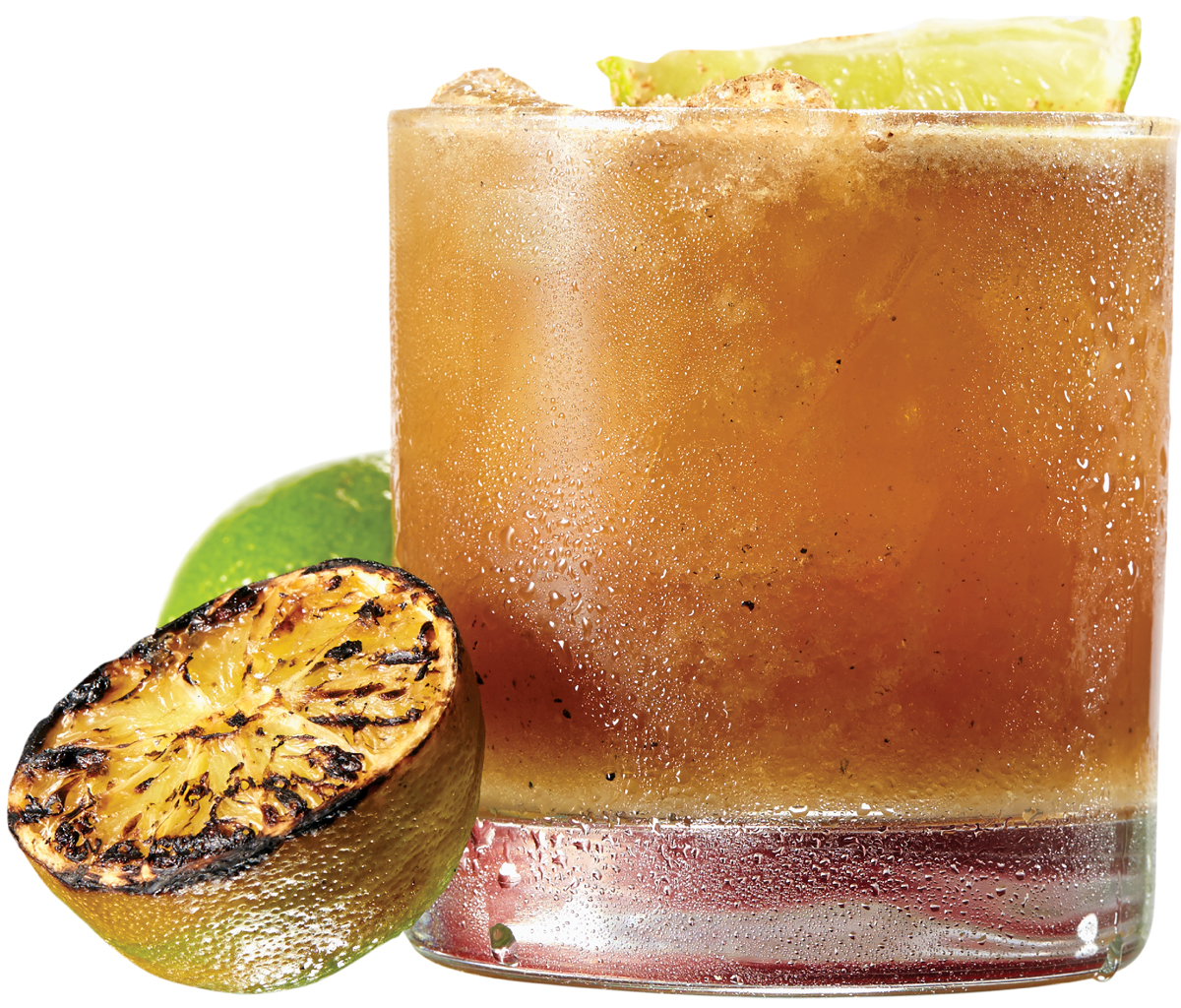
Photograph by Paul Saraceno. Styling by Rowena Day/Ennis.
The Cuba Libre 2013, 51 Lincoln
To elevate the flavors of a basic Cuba Libre (a rum and coke with lime juice), drink guru Ginny Edwards chars halved limes over the burners in the 51 Lincoln kitchen and combines the scorched-citrus juice with simple syrup and flat Coca-Cola. The mixture is recarbonated with an iSi canister, mixed with dark Old Monk rum, and topped with nutmeg. The benefit of all that extra labor? A heady complexity. “That smokiness balances so well with the inherent sugar in the rum and the simple syrup,” Edwards says.
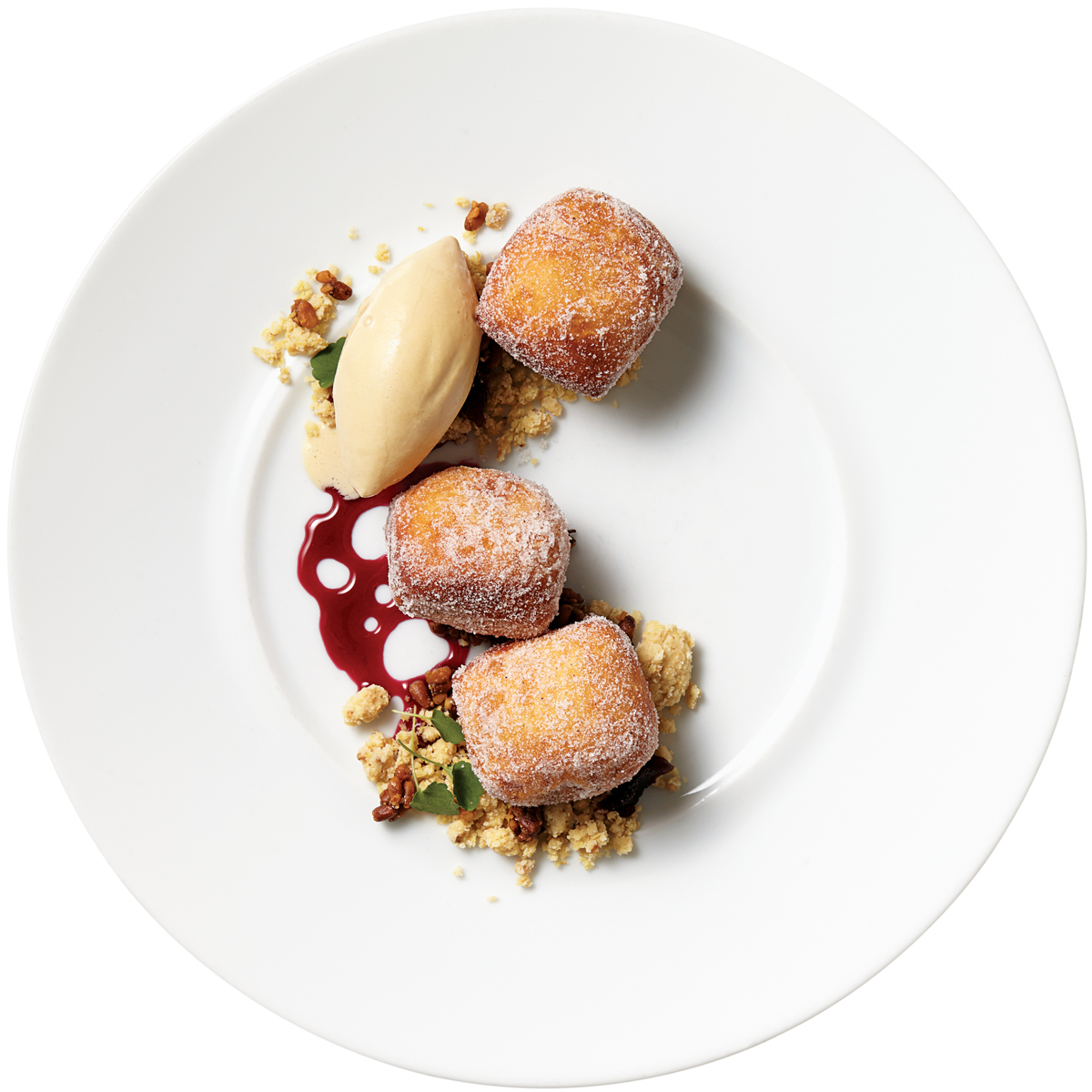
Photograph by Paul Saraceno. Styling by Rowena Day/Ennis.
Cranberry Beignets with Black Olives and Burnt-Honey Ice Cream, Clio
To punch up the flavor of her honey ice cream, pastry chef Monica Glass heats the sticky substance until it’s just barely charred. “At that point where it just becomes burnt, you really smell the honey…. I like the flavor of caramelized honey, so I felt that it would be a nice addition to the brininess of olives,” she says of the bittersweet confection. “If you only caramelize the honey, you don’t get the depth of flavor.”
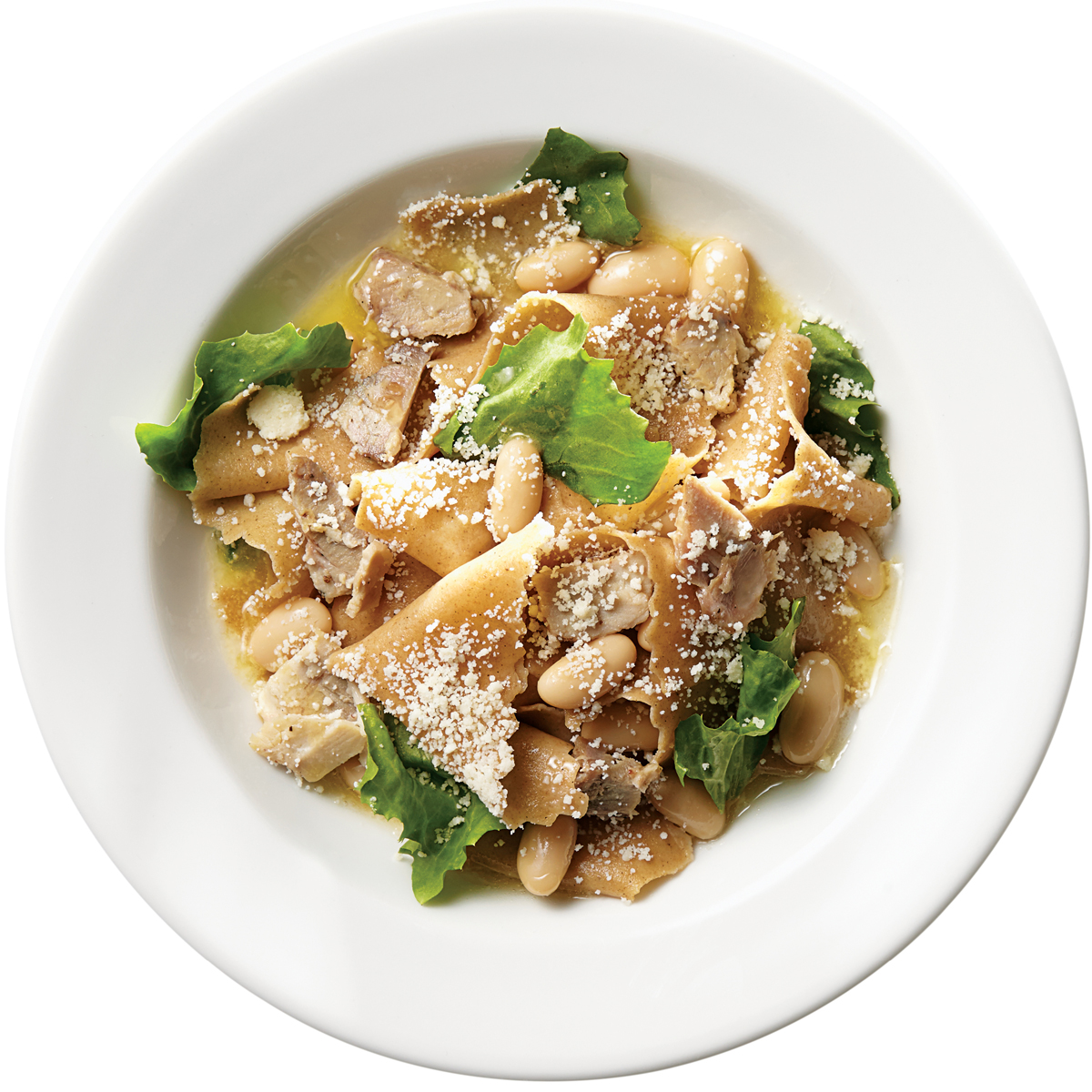
Photograph by Paul Saraceno. Styling by Rowena Day/Ennis.
Stracci di Grano Arso con Porchetta, Nebo
In Puglia, where Nebo owners Carla and Christine Pallotta’s mother grew up, grano arso (“burnt wheat”) pasta originated as a peasant dish made from scraps of grain gleaned post-harvest from the burned-over fields. “Grano arso has a toasted, nutty flavor that goes well with hearty sauces,” Carla says. The sisters offer their take in a raglike stracci shape, balancing the charred flavor with a meaty sauce of porchetta, escarole, cannellini beans, and pecorino Romano cheese.
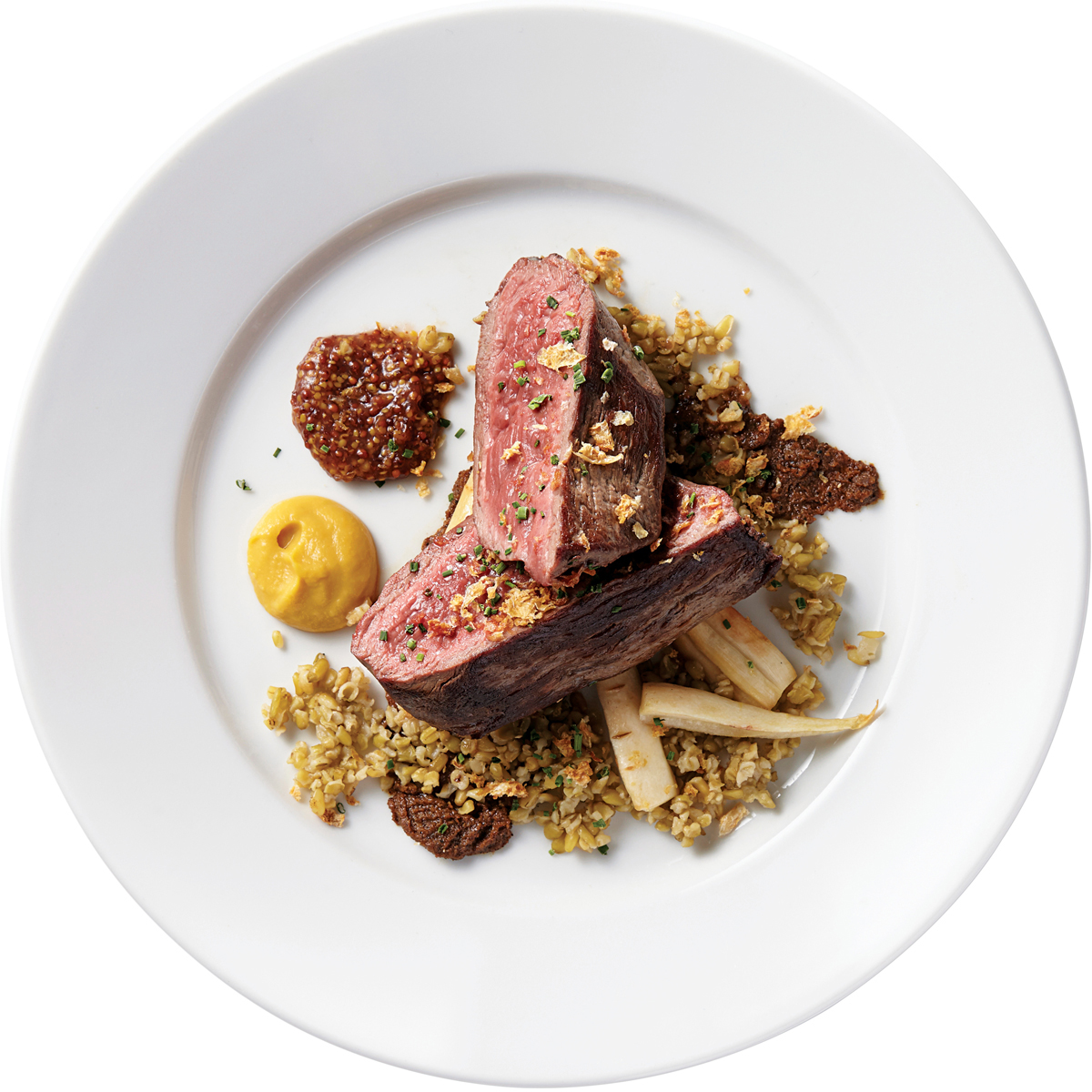
Photograph by Paul Saraceno. Styling by Rowena Day/Ennis.
Venison with Cranberry, Freekeh, and Burnt Béchamel, West Bridge
The unorthodox notion of burning creamy béchamel sauce—by overtoasting the flour and butter components of the roux and purposely scorching the milk stirred into it—started out as a happy accident. “When you scorch milk, it has this caramelly flavor. We burn the milk and blend it with fresh milk, and it sort of tastes like coffee,” says chef Matthew Gaudet, adding that the flavor profile works well with gamier meats like venison: “The béchamel gives everything that wintry body and creaminess.”
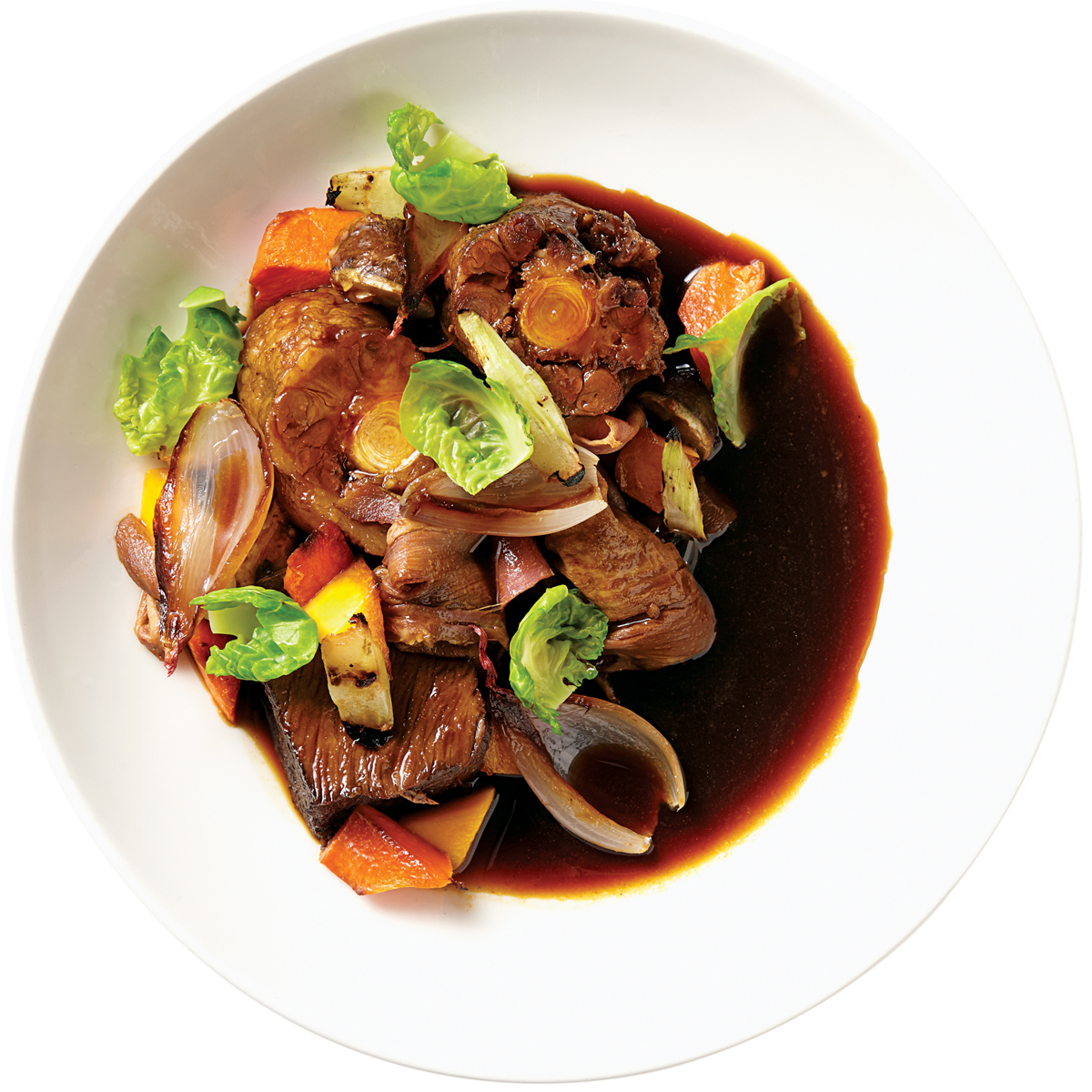
Photograph by Paul Saraceno. Styling by Rowena Day/Ennis.
Bollito Misto with Burnt-Onion Broth, the Salty Pig
The Italian answer to the classic Yankee boiled dinner, bollito misto is traditionally an assortment of boiled meats and vegetables served in a piping-hot broth. To upgrade the dish, chef Kevin O’Donnell braises oxtail, beef tongue, and short ribs, then infuses the broth with burnt onions before adding it to the finished dish, which comes with root veggies and sides of salsa verde, horseradish cream, and grape mostarda. “The burnt aspect adds a touch of bitterness and a depth of flavor, and balances out the dish so it’s both sweet and bitter,” O’Donnell says.


